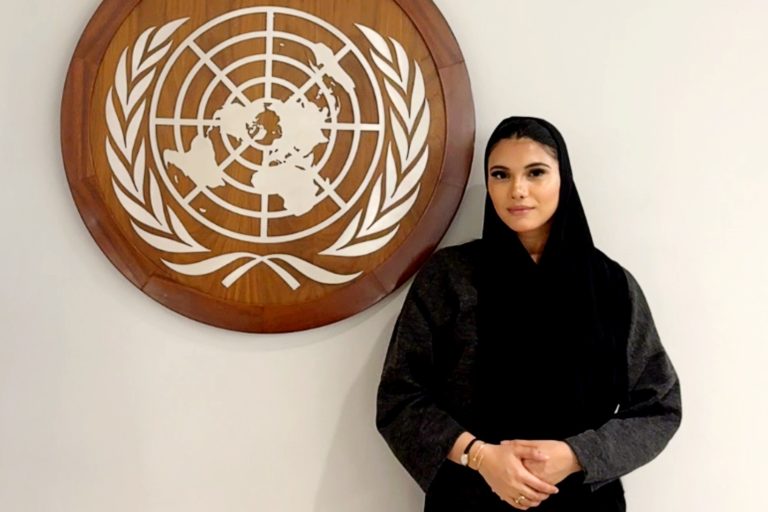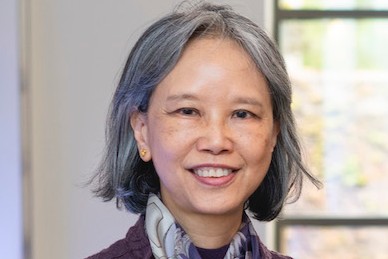
Mehrdad Sedaghat, who will graduate in May with an MFA in Graphic Design, was named one of the “2019 Students to Watch” by GDUSA (Graphic Design USA) magazine. The list includes the top 80 undergraduate, graduate, or continuing education students from across the country who are ready to burst on to the design scene and who have found personal and professional growth through their academic programs.
Sedaghat’s work, which focuses on diversity and human intersections, brings a new perspective to design. Through his research, he explores the hybrid visual culture and its relationship to the sensitivity of global politics in the Middle East and the United States.
“Throughout different points in my projects, I try to work through and respect the differences in these two societies and find intersections between the humans,” he said. “That is probably the aspect of my work that made me an interesting candidate to nominate for this recognition.”
Since coming to Michigan State University from Iran in 2016 to pursue his master’s degree, Sedaghat has used his background as inspiration for his work.
“I am here as an international student, so I always try to have authenticity in my work,” he said. “I have always made and curated designs based on my experiences.”

about the travel ban.
This spring, Sedaghat will hold an exhibition at MSU’s Eli and Edythe Broad Art Museum that will focus on the term “homeland.”
“It is really poetic,” he said. “I am looking to find my identity in this and I am trying to find my place in this new society.”
In 2017, as a student at MSU, Sedaghat held a solo exhibition in Iran, titled Placement, to showcase how media, specifically social media, can affect our daily lives. Through this show, he explored how people educate themselves about their environment through media, focusing on who provides us with this information, who benefits from it, and how we respond to it.
The Placement exhibit has led to the development of a project that is currently underway involving an online panel discussion that brings perspectives from Iranian and Western cultures into discourse.
“I saw how appropriation to these differences can make something amazing and beautiful,” Sedaghat said.
I reflect on how difficult this journey has been but also how special it really is for me. It all paid off, especially having received this recognition.
MEHRDAD SEDAGHAT, MFA CANDIDATE
During his time at MSU, Sedaghat has received several awards and fellowships to further his creative research.
“Working hard and continuing to work has been the key to this success,” he said.
He recently traveled to Denmark to attend the “Visual Culture and Computational Thinking” course at Aarhaus University where he shared his research and work with scholars of diverse perspectives. Closely related to his research, this course looked at the intersection between technology, culture, art, design, and society.
Before coming to MSU, Sedaghat’s professional experiences in Iran included a wide range of design practices, teaching, and community outreach. He was a Visiting Professor at the University of Applied Science and Technology in Iran, Art Director for several festivals and cultural events, Art director Graphic Designer for Istgah Azadi publication and Felesh advertising agency, and Principle Organizer for the Day of Design in Mashhad City.
As a high school student in Iran, Sedaghat took several art courses that sparked his interest in graphic design, which he now uses as a language and a tool to convey messages to his audience.

“Graphic design can be a service of commercial products, advertising, and consumerism, or you can use it in service of the development of society to share a message with people,” he said.
Now in his final semester at MSU after three years, Sedaghat says he has seen more nights in his studio than days.
“When I think about that, I reflect on how difficult this journey has been but also how special it really is for me. It all paid off, especially having received this recognition,” he said. “I never gave up. I always fought for everything. I had to make a choice about what I wanted, plan how I could achieve that, then fight hard for it.”
Sedaghat wants to continue teaching after he leaves MSU with the hope that he can remain a part of a university setting.
“I want to teach and share my experiences with my students,” he said, “and I want to prepare and train designers to focus on their environment and their society.”
Written by Caroline Caramagno


